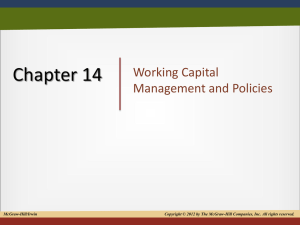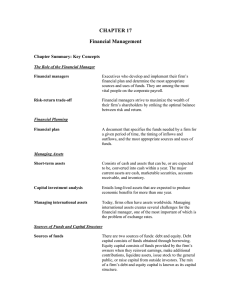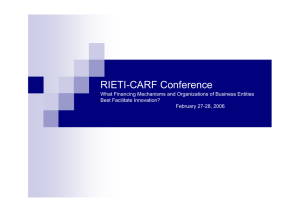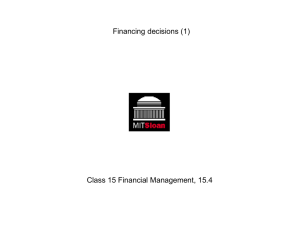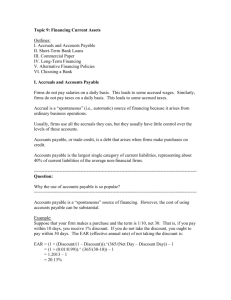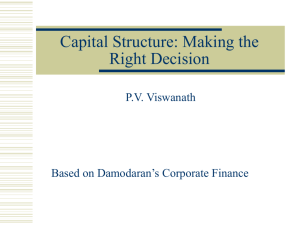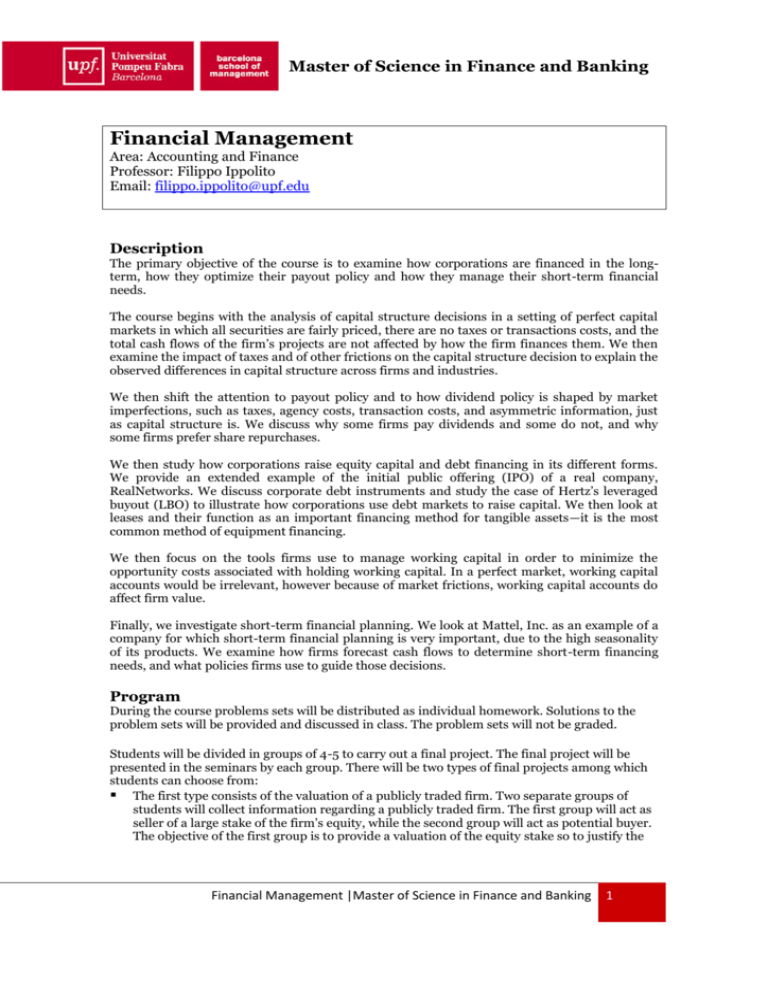
Master of Science in Finance and Banking
Financial Management
Area: Accounting and Finance
Professor: Filippo Ippolito
Email: filippo.ippolito@upf.edu
Description
The primary objective of the course is to examine how corporations are financed in the longterm, how they optimize their payout policy and how they manage their short-term financial
needs.
The course begins with the analysis of capital structure decisions in a setting of perfect capital
markets in which all securities are fairly priced, there are no taxes or transactions costs, and the
total cash flows of the firm’s projects are not affected by how the firm finances them. We then
examine the impact of taxes and of other frictions on the capital structure decision to explain the
observed differences in capital structure across firms and industries.
We then shift the attention to payout policy and to how dividend policy is shaped by market
imperfections, such as taxes, agency costs, transaction costs, and asymmetric information, just
as capital structure is. We discuss why some firms pay dividends and some do not, and why
some firms prefer share repurchases.
We then study how corporations raise equity capital and debt financing in its different forms.
We provide an extended example of the initial public offering (IPO) of a real company,
RealNetworks. We discuss corporate debt instruments and study the case of Hertz’s leveraged
buyout (LBO) to illustrate how corporations use debt markets to raise capital. We then look at
leases and their function as an important financing method for tangible assets—it is the most
common method of equipment financing.
We then focus on the tools firms use to manage working capital in order to minimize the
opportunity costs associated with holding working capital. In a perfect market, working capital
accounts would be irrelevant, however because of market frictions, working capital accounts do
affect firm value.
Finally, we investigate short-term financial planning. We look at Mattel, Inc. as an example of a
company for which short-term financial planning is very important, due to the high seasonality
of its products. We examine how firms forecast cash flows to determine short-term financing
needs, and what policies firms use to guide those decisions.
Program
During the course problems sets will be distributed as individual homework. Solutions to the
problem sets will be provided and discussed in class. The problem sets will not be graded.
Students will be divided in groups of 4-5 to carry out a final project. The final project will be
presented in the seminars by each group. There will be two types of final projects among which
students can choose from:
The first type consists of the valuation of a publicly traded firm. Two separate groups of
students will collect information regarding a publicly traded firm. The first group will act as
seller of a large stake of the firm’s equity, while the second group will act as potential buyer.
The objective of the first group is to provide a valuation of the equity stake so to justify the
Financial Management |Master of Science in Finance and Banking
1
Master of Science in Finance and Banking
highest possible selling price. The objective of the second group is also to estimate the value
of the equity stake, and pay for it as little as possible.
The second type of project requires the estimation of the optimal capital structure of a firm.
Two separate groups of students will be acting competitively to determine the capital
structure of a firm that maximizes firm value. Each group will present a proposal to the
board of directors of the firm (acted by the rest of the class), who will choose the best
proposal.
For each of these projects, both groups will prepare a report (max 25 pages inclusive of figures
and tables, 1.5 spaced,) and a power point presentation (max 25 slides). Information on the
financial accounts of the firms and prices of securities will be obtainable from Compustat, CRSP,
Datastream and other publicly available sources.
Seminars will be employed for discussing the solutions of the problem sets and for the
presentation of the final projects.
Evaluation
Final Exam: 70%
Final projects and seminar participation: 30%
Bibliography
The main textbook is Jonathan Berk and Peter DeMarzo, Corporate Finance, Second Edition,
2011, published by Pearson Prentice Hall. Buying the book is strongly adviced.
Also useful is the book by Aswath Damodaran, Applied Corporate Finance: A User's Manual,
Second Edition, published by John Wiley and Sons.
Additional reading will be provided.
Course tentative outline
Sessions
Content
Part I: Capital Structure
Theory 1
Theory 2
Theory 3
Theory 4
Theory 5
Capital Structure in a Perfect Market
Capital Structure in a Perfect Market
Debt and Taxes
Debt and Taxes
Financial Distress, Managerial Incentives, and
Information
Financial Distress, Managerial Incentives, and
Information
Payout Policy
Payout Policy
Problem Set 1
Theory 6
Theory 7
Theory 8
Seminar 1
Chapter
Week
14
14
15
15
16
1
1
2
2
3
16
3
17
17
4
4
5
23
23
5
5
6
6
6
7
7
Part III: Long-Term Financing
Theory 9
Theory 10
Seminar 2
Theory 11
Theory 12
Seminar 3
Theory 13
The Mechanics of Raising Equity Capital
The Mechanics of Raising Equity Capital
Problem Set 2
Debt Financing
Debt Financing
Problem Set 3
Leasing
24
24
25
Financial Management |Master of Science in Finance and Banking
2
Master of Science in Finance and Banking
Part IV: Short-Term Financing
Theory 14
Seminar 4
Theory 15
Theory 16
Working Capital Management
Problem Set 4 – Hand in and Presentations of Final
Projects
Short-Term Financial Planning
Revision
26
7
8
27
8
8
Financial Management |Master of Science in Finance and Banking
3



